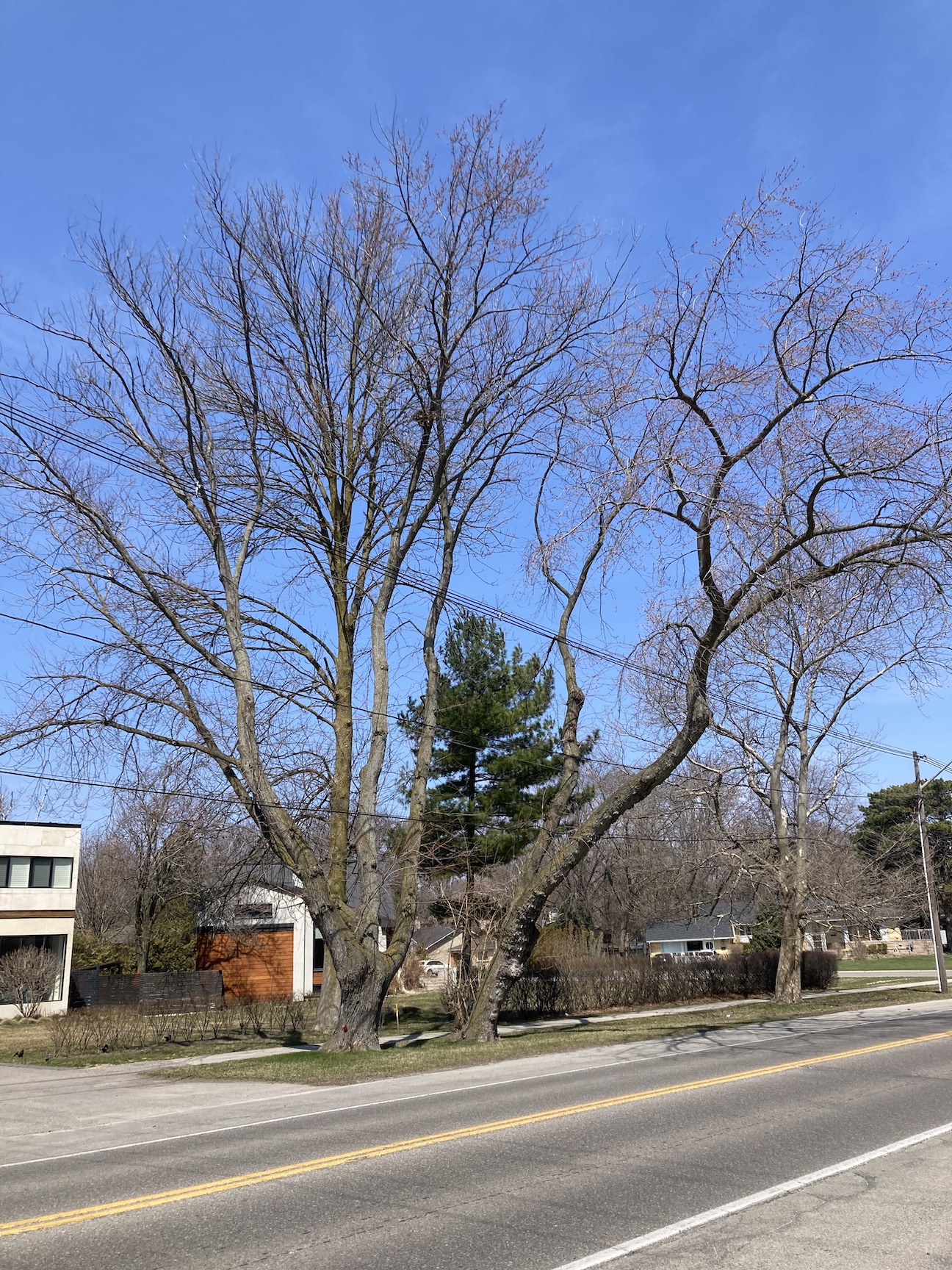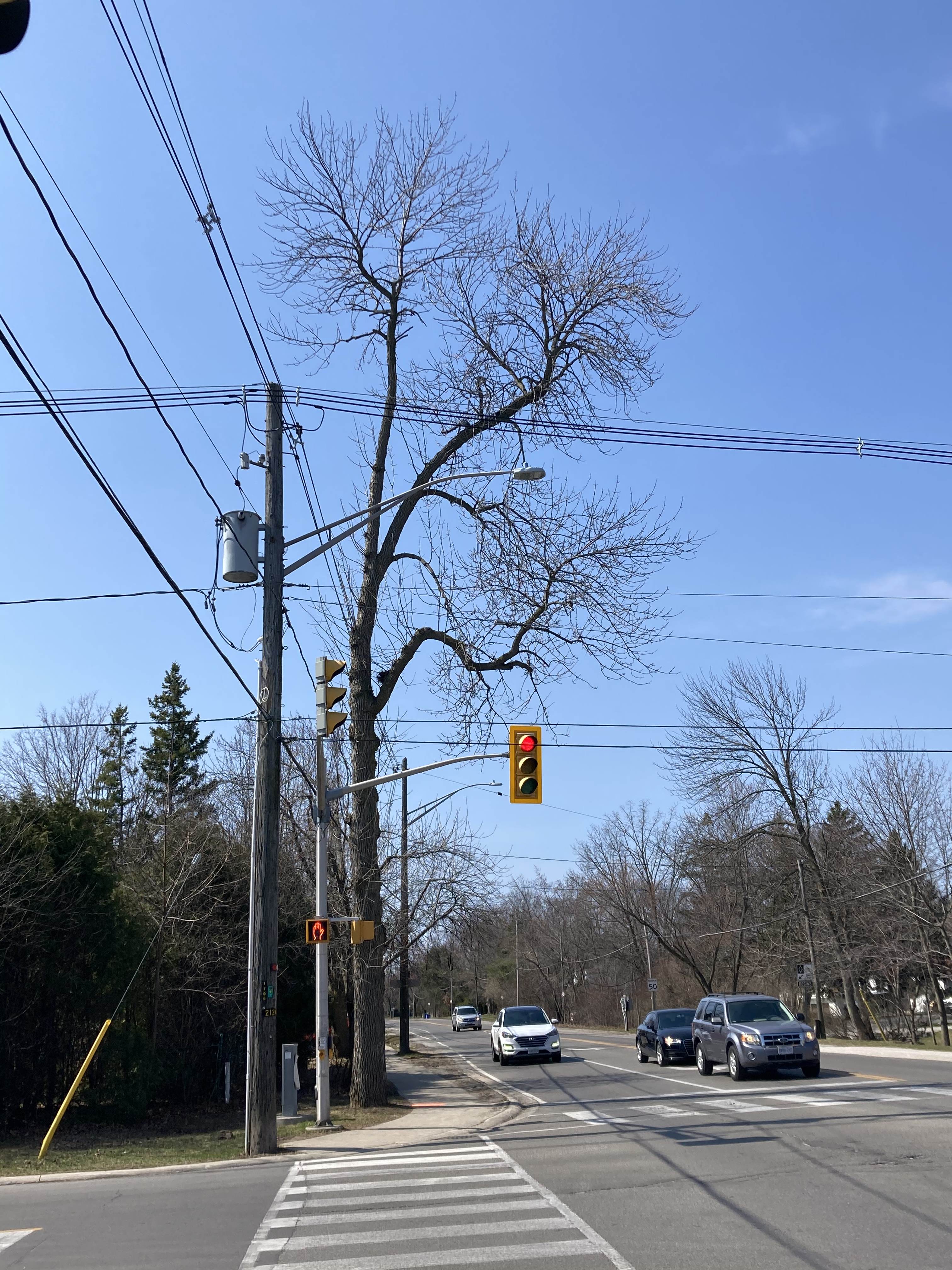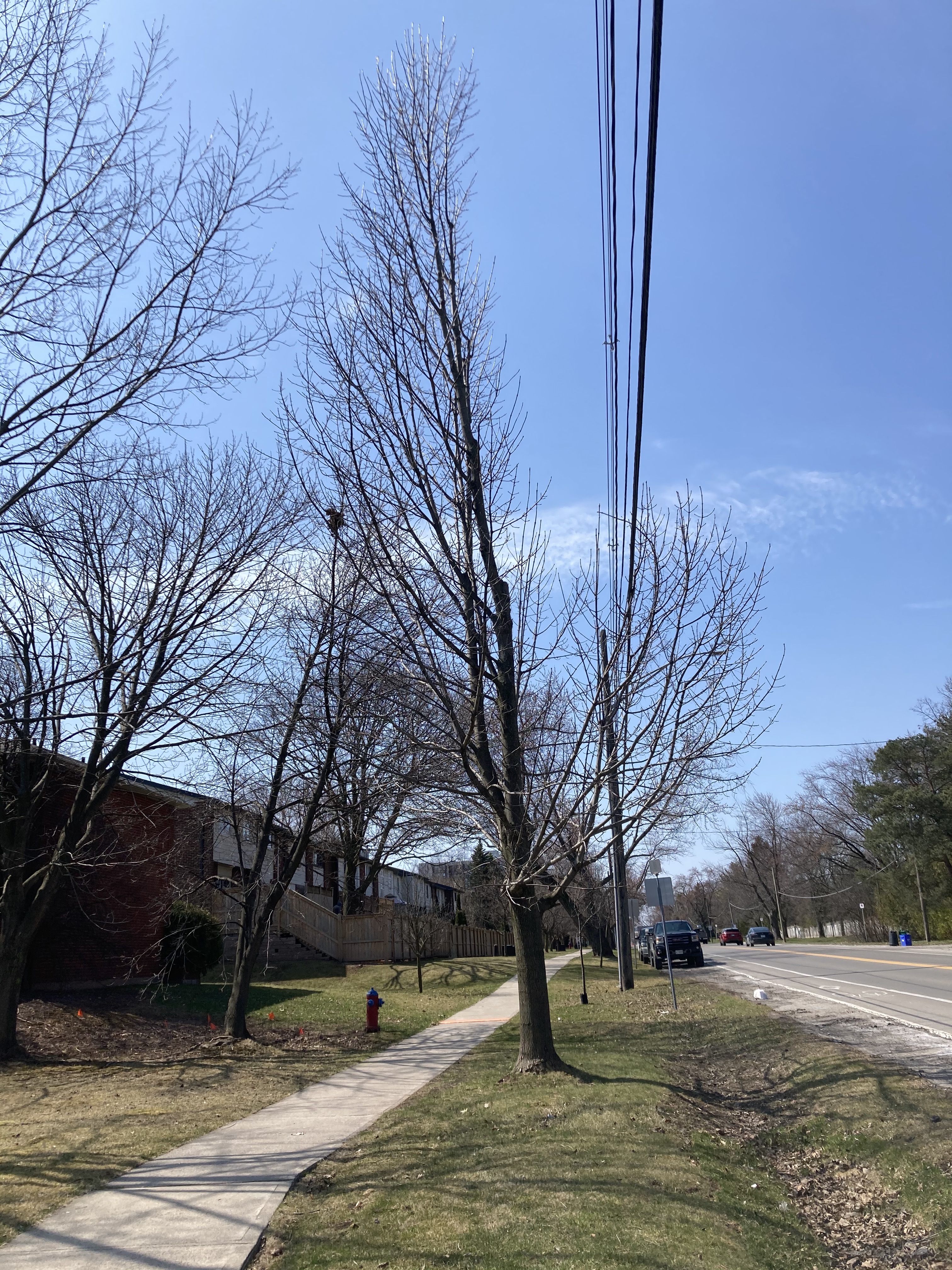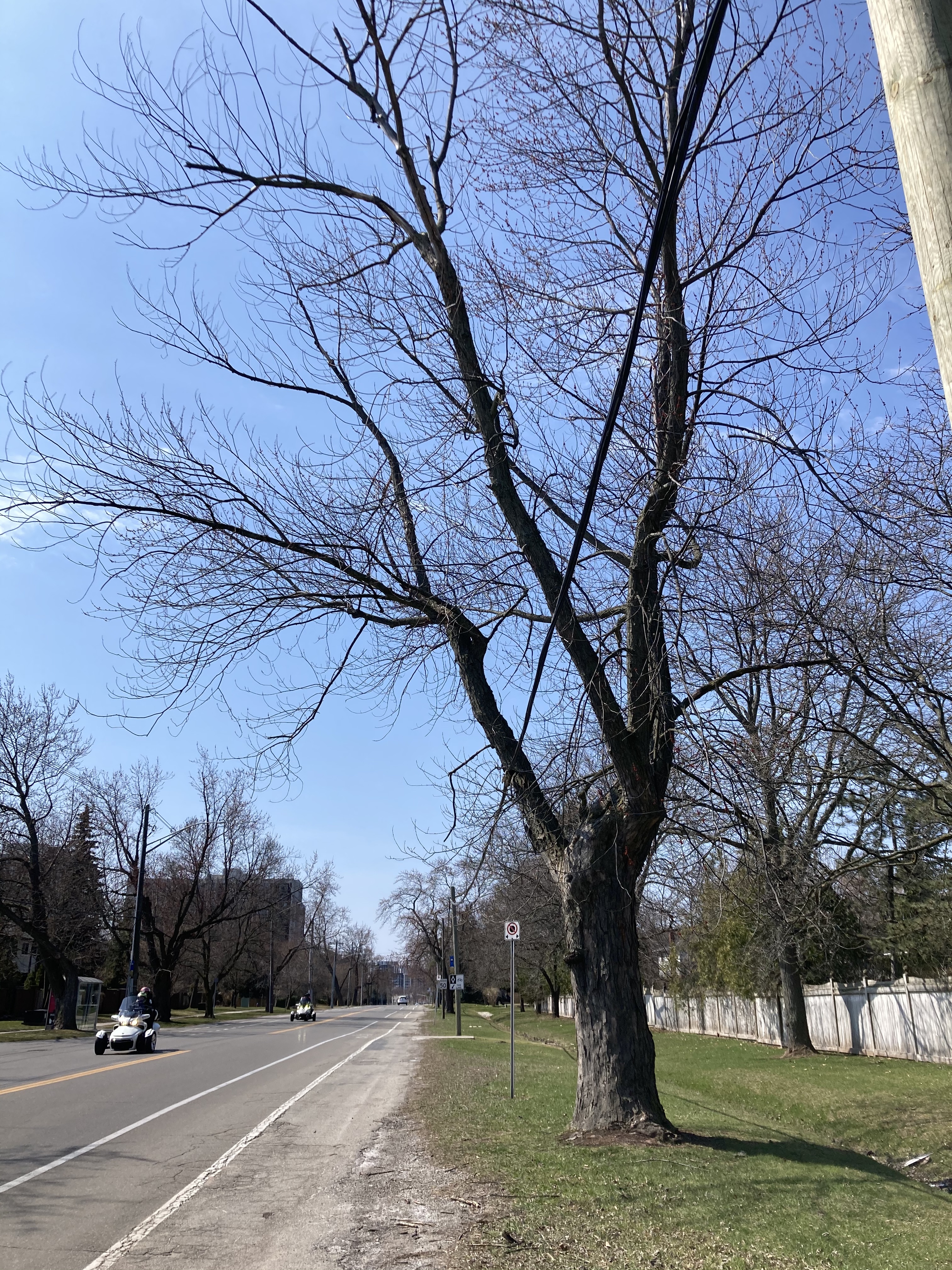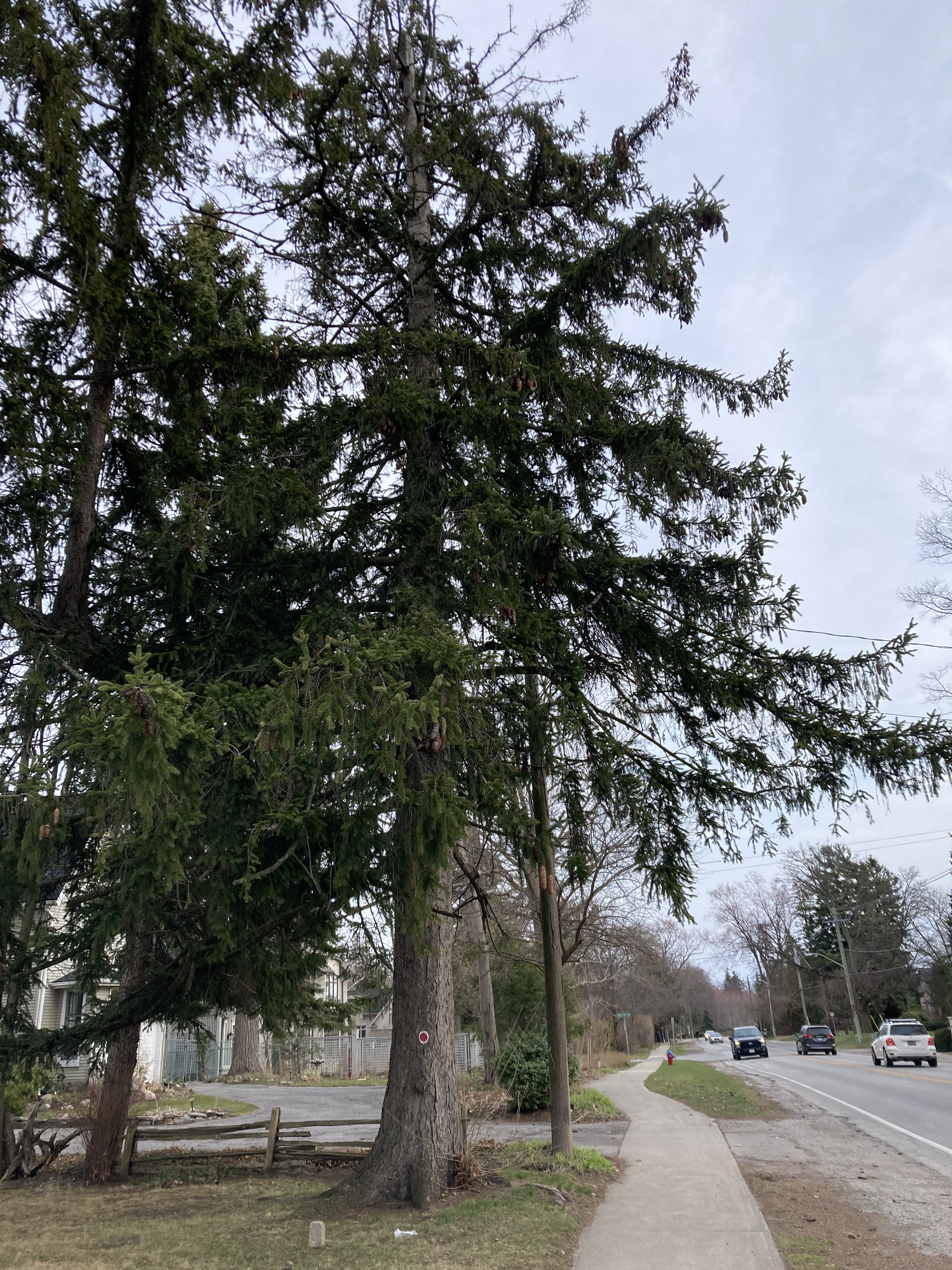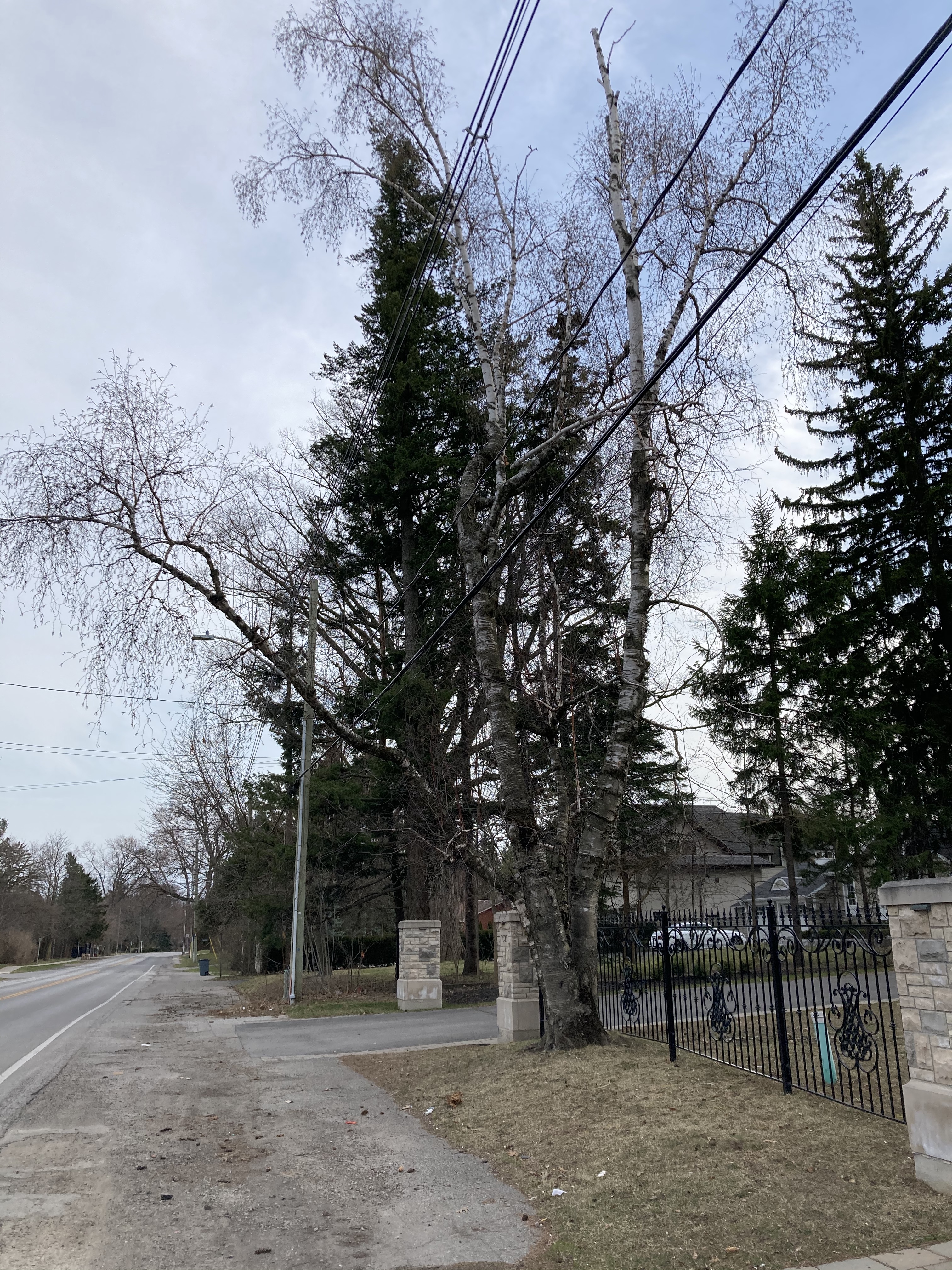LAKESHORE ROAD WEST:
A Multi-Year Battle to Preserve a Scenic Corridor
A Part of Oakville's History
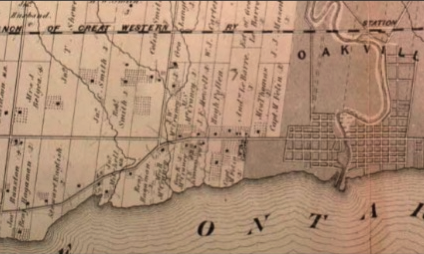
The earliest section of Lakeshore Road runs from Great Lakes Boulevard to Fourth Line and was originally part of an Indigenous trail used by the Mississaugas along the shores of Lake Ontario.
The second section from Fourth Line to Winston Churchill Boulevard follows a straight east- west concession road, originally laid out as part of the 1806 Wilmot Survey.
The origins of these two sections of Lakeshore Road still define much of their character and arrangement today. As well, Lakeshore Road was one of the original Kings Highways introduced in 1917.
The second section from Fourth Line to Winston Churchill Boulevard follows a straight east- west concession road, originally laid out as part of the 1806 Wilmot Survey.
The origins of these two sections of Lakeshore Road still define much of their character and arrangement today. As well, Lakeshore Road was one of the original Kings Highways introduced in 1917.
What's the Big Deal?
Lakeshore Road West is an iconic part of Oakville's beauty. Its history stretches back to days when it was part of an indigenous trail along the shores of Lake Ontario. And, it is identified in Oakville's Official Plan as a Scenic Corridor.
That identification carries important policies that support its conservation.
* 3.14 Scenic Corridors: recognized for their scenic value and for natural and cultural heritage features. Important features that need to be maintained or restored since they add value and contribute to the Town’s character.
* 5.3.11 The scenic character of Lakeshore Road should be conserved.
* 10.1.1 To maintain the existing urban forest; and, to progressively increase the urban forest .
Oakville’s Tree Preservation Policy -Trees on public lands shall be removed only to safeguard public safety.
VISIT FREQUENTLY ASK QUESTIONS FOR MORE DETAILS ON SCENIC CORRIDORS
That identification carries important policies that support its conservation.
* 3.14 Scenic Corridors: recognized for their scenic value and for natural and cultural heritage features. Important features that need to be maintained or restored since they add value and contribute to the Town’s character.
* 5.3.11 The scenic character of Lakeshore Road should be conserved.
* 10.1.1 To maintain the existing urban forest; and, to progressively increase the urban forest .
Oakville’s Tree Preservation Policy -Trees on public lands shall be removed only to safeguard public safety.
VISIT FREQUENTLY ASK QUESTIONS FOR MORE DETAILS ON SCENIC CORRIDORS
In 2018, the results of a Class Environmental Assessment on Lakeshore Road West carried a staff recommendation for urbanization of Lakeshore Road West between Mississaga Street in Bronte and Dorval Drive in the east. The urbanization was to include
- the widening of the road to accommodate a continuous centre turn lane,
- the addition of a 3-m wide asphalt Multi-Use Path,
- the cutting down over 300 trees,
- the expropriation of land from dozens of home owners,
- the addition of curbs and gutters along the route, bike lanes and adjustments to intersections.
- The entire Lakeshore Road West corridor was functioning at acceptable levels of service and would continue to do so to 2031 and beyond. Population forecasts included the recently completed condos at Bronte Rd and Lakeshore.
- The safety performance of road sections and intersections along Lakeshore between Third Line and Dorval were all functioning at expected safety levels and did not require additional investigation or countermeasures.
- There was no need for a continuous centre turning lane! Individual turn lanes could be positioned at specific intersections if required. Further … a continuous centre lane encourages speeding.
- The widening process would result in the loss of 300 trees!
- Property owners would lose frontage, trees and established elements such as fences, gates, walls, etc.
Then What?
Over the following years, through our ongoing efforts and community involvement …
And Now?
Five years later, we continue to fight for …
The preservation of Lakeshore Road West as a Scenic Corridor - its beauty, historic cultural value and the important role it plays in the character of Oakville.
The preservation of dozens of trees that are still on the chopping block.
Sustainable solutions that show we're serious about fighting climate change - reducing impervious surfaces and grey infrastructure (asphalt, cement, etc.) reducing run-off using green stormwaters methods, capturing rain where it falls.
The preservation of Lakeshore Road West as a Scenic Corridor - its beauty, historic cultural value and the important role it plays in the character of Oakville.
The preservation of dozens of trees that are still on the chopping block.
Sustainable solutions that show we're serious about fighting climate change - reducing impervious surfaces and grey infrastructure (asphalt, cement, etc.) reducing run-off using green stormwaters methods, capturing rain where it falls.
A Small Sample of Trees at Risk
This is just a small sample of the trees at risk of loss. Every image here features a tree or multiple trees that will be cut down if the proposed multi-use path and/or urbanization of the road is undertaken.
This isn't about losing a few trees. In total, more than 50 trees are on the chopping block. Along one section of Lakeshore Road between Bronte Village and Third Line, a total of 19 trees in a row would be lost. What is now a very pleasant walk shaded by trees would turn into a treeless asphalt path. Summer air temperatures of 31 Celsius /87 Fahrenheit create asphalt temperatures of 62 Celsius/143 Fahrenheit.
In season, every one of these trees casts shade on the paths and sidewalks below them. They soak up rain water, clean the air and help prevent erosion. It doesn't matter if we're talking about 50 trees or 500. Every tree makes a contribution to the beauty of Lakeshore, to Oakville's overall tree canopy and to our fight against climate change.
It's simple. No tree should ever be removed to make way for an asphalt path or grey infrastructure. Both fly in the face of the responsible actions we are committed to taking in the climate crisis we've declared as a town.
This isn't about losing a few trees. In total, more than 50 trees are on the chopping block. Along one section of Lakeshore Road between Bronte Village and Third Line, a total of 19 trees in a row would be lost. What is now a very pleasant walk shaded by trees would turn into a treeless asphalt path. Summer air temperatures of 31 Celsius /87 Fahrenheit create asphalt temperatures of 62 Celsius/143 Fahrenheit.
In season, every one of these trees casts shade on the paths and sidewalks below them. They soak up rain water, clean the air and help prevent erosion. It doesn't matter if we're talking about 50 trees or 500. Every tree makes a contribution to the beauty of Lakeshore, to Oakville's overall tree canopy and to our fight against climate change.
It's simple. No tree should ever be removed to make way for an asphalt path or grey infrastructure. Both fly in the face of the responsible actions we are committed to taking in the climate crisis we've declared as a town.
6 FAST FACTS ON LAKESHORE
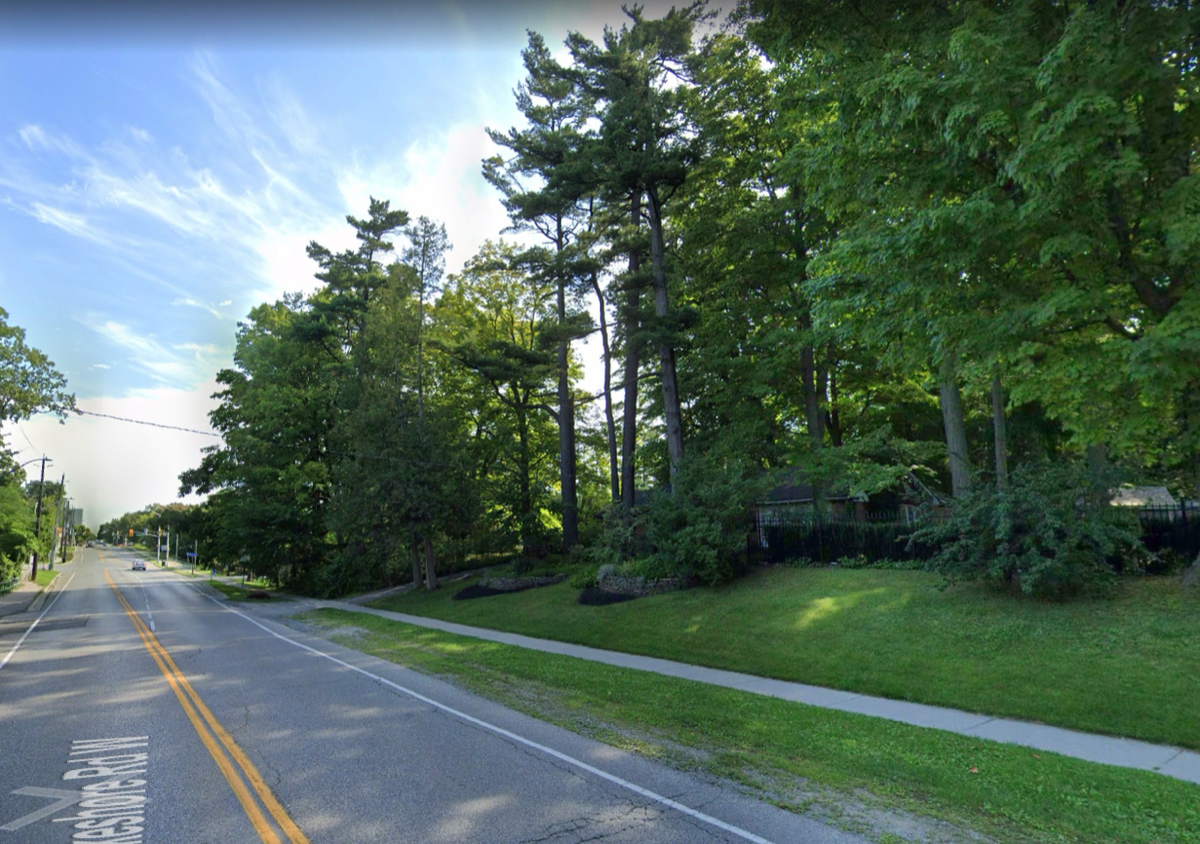
1. LAKSHORE RD HAS SPECIAL SIGNIFICANCE AS A SCENIC CORRIDOR
* Identified in our Official Plan with policies that support its conservation.
* 3.14 Scenic Corridors: recognized for their scenic value and for natural and cultural heritage features. Important features that need to be maintained or restored since they add value and contribute to the Town’s character.
* 5.3.11 The scenic character of Lakeshore Road should be conserved.
* 10.1.1 To maintain the existing urban forest; and, to progressively increase the urban forest .
Oakville’s Tree Preservation Policy -Trees on public lands shall be removed only to safeguard public safety.
* Identified in our Official Plan with policies that support its conservation.
* 3.14 Scenic Corridors: recognized for their scenic value and for natural and cultural heritage features. Important features that need to be maintained or restored since they add value and contribute to the Town’s character.
* 5.3.11 The scenic character of Lakeshore Road should be conserved.
* 10.1.1 To maintain the existing urban forest; and, to progressively increase the urban forest .
Oakville’s Tree Preservation Policy -Trees on public lands shall be removed only to safeguard public safety.

2. RECOGNISE CLIMATE CHANGE
We must assess the entire project through a Climate Emergency Screening Tool. Cutting down trees for the sake of an asphalt path is not acceptable.
The urban profile of Lakeshore Road West allows rainwater to be absorbed by soil, trees, shrubs and roadside ditches. Creating curbs, catch basins and additional grey infrastructure is not only unnecessary, it results in an increase of dirty stormwater runoff being directed into pipes faster, thus increasing runoff and the pollution that enters Lake Ontario.
Let's take this opportunity to make this project one that puts fighting climate change its priority.
We must assess the entire project through a Climate Emergency Screening Tool. Cutting down trees for the sake of an asphalt path is not acceptable.
The urban profile of Lakeshore Road West allows rainwater to be absorbed by soil, trees, shrubs and roadside ditches. Creating curbs, catch basins and additional grey infrastructure is not only unnecessary, it results in an increase of dirty stormwater runoff being directed into pipes faster, thus increasing runoff and the pollution that enters Lake Ontario.
Let's take this opportunity to make this project one that puts fighting climate change its priority.

3. PROPOSED MULTI-USE PATH IS THE #1 KILLER OF TREES
The proposed multi-use path is the #1 KILLER OF TREES. A decision to cut down trees to replace them with an asphalt path flies in the face of our commitment to fighting climate change. It simply isn't acceptable.
In this photo, 19 trees between East Street and Third Line would be destroyed, and along the entire route, dozens of other trees would be lost.
The proposed multi-use path is the #1 KILLER OF TREES. A decision to cut down trees to replace them with an asphalt path flies in the face of our commitment to fighting climate change. It simply isn't acceptable.
In this photo, 19 trees between East Street and Third Line would be destroyed, and along the entire route, dozens of other trees would be lost.

4. THE REALITY OF PATH CONSTRUCTION
This is what construction of a 3-m wide multi-use path actually looks like.
This is what construction of a 3-m wide multi-use path actually looks like.
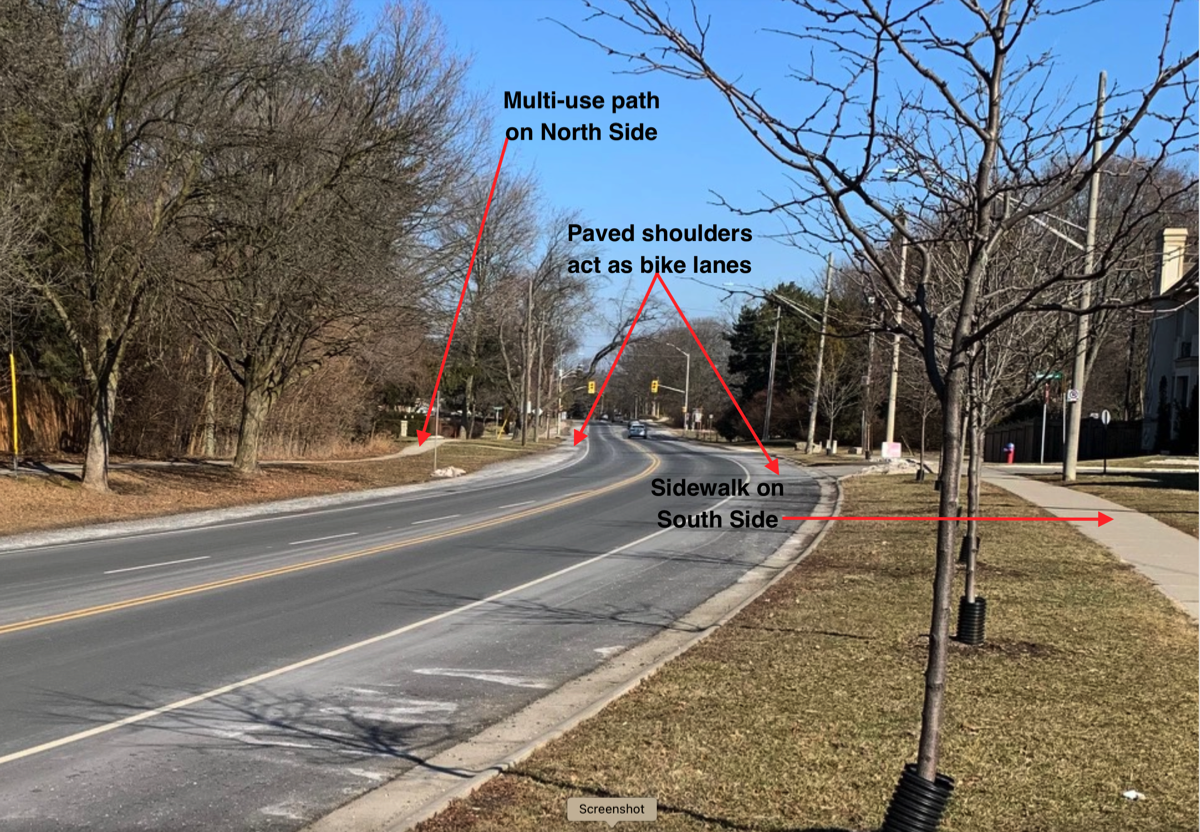
5. WIDE ENOUGH FOR ALL OUR NEEDS
- The current width of Lakeshore can provide a wide paved shoulder or cycle lane.
- Sidewalks already exist on the South side ALONG THE ENTIRE PROJECT ROUTE. The sidewalks are in good condition and are set well back from the road, offering pedestrians a safe, scenic place to walk and enjoy surroundings.
- The existing paved path on the north side can be extended in some places. Both meet AODA standards and the path is identified on Town maps as being part of the Waterfront Trail.
- As with Lakeshore Road EAST, we can't expect to have a path on the north side in all areas if we want to preserve trees and character. Walkers, joggers and others can share spaces. It's what we already do!

6. GREEN RAINWATER SOLUTIONS, NOT GREY
The image above is part of the overland natural drainage system that still exists in many areas near Lakeshore Road. As these overland systems convey water to Lake Ontario, they slow the water, allowing it to soak into the soils around them. Water that is absorbed is also filtered, thereby reducing grit and other pollutants that are present in stormwater runoff from the gutters and underground pipes used in grey infrastructure.
There are already a number of areas along Lakeshore Road West and nearby streets that use grey infrastructure. We don't want to increase it. Instead, we want to enhance/restore the green infrastructure we have in order to lessen the effects and costs of grey infrastructure. We want our systems to be more natural, as they are the systems that create sustainability.
A staff report from 2018 clearly states "Lakeshore West is located close to the Lake Ontario; therefore, storm water quantity controls are not required to reduce flows from the roadway". It is only when the road is "urbanized" that additional drainage infrastructure is needed.
Staff continue to say the grey infrastructure they wish to add below the road is for conveyance. We continue to stress the importance of controlling stormwater "where it falls". This is the approach that is driven by green solutions. If the Lakeshore Road area is threatened by stormwater from areas farther north, stormwater improvements need to happen in those areas first.
The image above is part of the overland natural drainage system that still exists in many areas near Lakeshore Road. As these overland systems convey water to Lake Ontario, they slow the water, allowing it to soak into the soils around them. Water that is absorbed is also filtered, thereby reducing grit and other pollutants that are present in stormwater runoff from the gutters and underground pipes used in grey infrastructure.
There are already a number of areas along Lakeshore Road West and nearby streets that use grey infrastructure. We don't want to increase it. Instead, we want to enhance/restore the green infrastructure we have in order to lessen the effects and costs of grey infrastructure. We want our systems to be more natural, as they are the systems that create sustainability.
A staff report from 2018 clearly states "Lakeshore West is located close to the Lake Ontario; therefore, storm water quantity controls are not required to reduce flows from the roadway". It is only when the road is "urbanized" that additional drainage infrastructure is needed.
Staff continue to say the grey infrastructure they wish to add below the road is for conveyance. We continue to stress the importance of controlling stormwater "where it falls". This is the approach that is driven by green solutions. If the Lakeshore Road area is threatened by stormwater from areas farther north, stormwater improvements need to happen in those areas first.
It's Time to Get Involved

Treat Lakeshore with the Care a Scenic Corridor Merits.
- Climate Change Emergency strategies must take precedence. Apply a context-sensitive, climate lens to assess proposed changes.
- All modifications should be limited to the present size of the road deck.
- No removal of trees for any reason other than disease or public safety.
- Resurface the road including paving of the shoulder or addition of adequate bike lanes.
- Continue the use of existing sidewalks along Lakeshore as well as the existing multi-use path on the north side (identified on Town maps as being part of the Waterfront Trail system).
- Repair problem areas in sidewalks and the path, if and where they are required, and extend them where possible. All work must be undertaken in a manner that preserves trees.
- Preserve the rural cross section of the road with its natural shoulders, greenery, roadside ditches, trees, grass, etc. These all serve to carry, filter and absorb stormwater. We MUST take climate change seriously and preserve our natural green assets.
- Using a climate change lens, undertake a review of stormwater alternatives for the areas north of Lakeshore that are contributing to the proposed need for a large piece of infrastructure to convey water to Lake Ontario. These alternatives must by undertaken with a view that reflects the practice of catching water where it falls utilizing green infrastructure and/or of the newest approaches that utilize green/blue hybrids.
- Be fiscally responsible.
Summation in a Nutshell:
Important Points, & Outstanding Questions
Our Climate Crisis Needs Action
We Must Recognize Climate Change
- We must assess the entire project through a Climate Emergency Screening Tool. Cutting down trees for the sake of an asphalt path is not acceptable. Adding more grey stormwater infrastructure is short-sighted.
- The urban profile of Lakeshore Road West allows rainwater to be absorbed by soil, trees, shrubs and roadside ditches. Creating curbs, catch basins and additional grey infrastructure results in an increase of dirty stormwater runoff being directed into pipes faster, thus increasing runoff and the pollution that enters Lake Ontario.
- Let's make this an opportunity to make this project a leader in the marriage of the latest green-blue hybrid stormwater infrastructure. Let's preserve, restore and enhance our natural assets.
$68-MILLION PLUS
The costs for this project continue to escalate.
* In 2018 the estimated capital cost was approximately $31,665,000 exclusive of land and utility relocation costs.
* In 2020, we reported the estimated cost for the overall project would surpass $50-Million.
* In 2022, another $5.08-Million was approved for the coming year and all but $25,000 was for outside services. The 2022 Budget indicated the cost for this project had now grown to $68.2 Million! Add to this the $900,000 spent in 2022 for temporary resurfacing.
* In 2018 the estimated capital cost was approximately $31,665,000 exclusive of land and utility relocation costs.
* In 2020, we reported the estimated cost for the overall project would surpass $50-Million.
* In 2022, another $5.08-Million was approved for the coming year and all but $25,000 was for outside services. The 2022 Budget indicated the cost for this project had now grown to $68.2 Million! Add to this the $900,000 spent in 2022 for temporary resurfacing.
No Meaningful Engagement Since 2018
No in-person consultation has been undertaken since 2018, when our Councillors insisted that staff and consultants attend and engage directly with residents.
The result of that meeting was the removal of the centre turning lane from the proposal and a motion from Council that staff return in future with a plan that would include NO TREES REMOVED. Staff never fulfilled that direction. It reported in 2021 it was unable to find a solution.
Due to COVID, input on the 2021 Preferred Option of staff's plan was received online.
**FACT: **There were 194 responses. **More than 50% specifically opposed the plan and removal of trees**. Only 18% supported it.
The result of that meeting was the removal of the centre turning lane from the proposal and a motion from Council that staff return in future with a plan that would include NO TREES REMOVED. Staff never fulfilled that direction. It reported in 2021 it was unable to find a solution.
Due to COVID, input on the 2021 Preferred Option of staff's plan was received online.
**FACT: **There were 194 responses. **More than 50% specifically opposed the plan and removal of trees**. Only 18% supported it.
EA Process Continued When No Longer Required
In July 2021, staff disclosed the following: The removal of the continuous centre lane meant the Class Environmental Assessment was no longer a requirement, but HAD continued SINCE IT PROVIDED A FORUM FOR EXTENSIVE PUBLIC CONSULTATION.
Staff had never notified residents or Council of this fact. The Town of Oakville continued to refer to the Lakeshore Road West project as an CLASS EA project in all its communications, written materials and in directions to residents when outlining continued necessary steps to be undertaken in the process. It also continued to engage the consultant hired for the EA process and provide staff with more funds requested in annual budgets under the umbrella of "additional activities that would be carried out under the EA process".
Staff had never notified residents or Council of this fact. The Town of Oakville continued to refer to the Lakeshore Road West project as an CLASS EA project in all its communications, written materials and in directions to residents when outlining continued necessary steps to be undertaken in the process. It also continued to engage the consultant hired for the EA process and provide staff with more funds requested in annual budgets under the umbrella of "additional activities that would be carried out under the EA process".
A Context Sensitive Solution
Deliver A Bespoke Solution
- We have continually asked for the use of context sensitive design in creating the renewal of Lakeshore Road West.
- We need to work within the historic context of the road with its mature trees, quaint rural feel and natural drainage features.
- Lakeshore Road is a Scenic Corridor. Let's respect its significance.
Preserve and Enhance
Work With What We Have and Enhance It.
- As this photo demonstrates, the road in its current geography can accommodate bike lanes or a paved shoulder.
- We don't support the introduction of a 3-meter wide asphalt path that will kill dozens of trees.
- Our present sidewalks and path are set well-back from the road edge and shaded by trees.
Give Lakeshore West Parity with Lakeshore East
In East Oakville, Staff and Residents Planned Their Path Together.
Note the differences!
* The path is 2m wide and set back from the road.
* Only two trees were removed - failing health.
* Arborist on site during work.
* Path would move to the north side in some areas to accommodate restrictions like hydro poles or trees that would be damaged/cut down. Cost and appearance were factors in making decisions.
* Staff advised not all areas along Lakeshore would get a path due to sidewalk by-laws, space restrictions and the fact that tearing up what existed to replace it with a thin strip of asphalt would not be a good use of taxpayers' money.
Why have residents of Lakeshore Road WEST not been granted the same discussions and considerations? The solutions used on Lakeshore Road East directly mirror what residents in the West have been saying for years.
Note the differences!
* The path is 2m wide and set back from the road.
* Only two trees were removed - failing health.
* Arborist on site during work.
* Path would move to the north side in some areas to accommodate restrictions like hydro poles or trees that would be damaged/cut down. Cost and appearance were factors in making decisions.
* Staff advised not all areas along Lakeshore would get a path due to sidewalk by-laws, space restrictions and the fact that tearing up what existed to replace it with a thin strip of asphalt would not be a good use of taxpayers' money.
Why have residents of Lakeshore Road WEST not been granted the same discussions and considerations? The solutions used on Lakeshore Road East directly mirror what residents in the West have been saying for years.
We Can Deliver Active Transportation
We Can Deliver Active Transportation With What Exists
◦ The sidewalks are in good condition and are set well back from the road, offering pedestrians a safe, scenic place to walk and enjoy the surroundings.
◦ The existing paved path on the north side can be extended in some places. Both meet AODA standards and the path is identified on Town maps as being part of the Waterfront Trail.
◦ The sidewalks are in good condition and are set well back from the road, offering pedestrians a safe, scenic place to walk and enjoy the surroundings.
◦ The existing paved path on the north side can be extended in some places. Both meet AODA standards and the path is identified on Town maps as being part of the Waterfront Trail.
- As with Lakeshore Road EAST, we can't expect to have a path on the north side in all areas if we want to preserve trees and character. Walkers, joggers and others can share spaces. It's what we already do!
A No-Loss Solution
Council Asked for a No-Loss Solution
In August of 2018 Town Council unanimously passed a motion that directed staff to complete additional consultation and report back in early 2019 with recommendations that would include:
- at least one option reflecting no continuous centre lane, no loss of trees and no expropriation of property, while maintaining cycle lanes and reflecting sidewalks/multiuse paths on at least one side and minimizing impervious surfaces.
**Three years later, at the July 6, 2021 Special Meeting of Council, when staff presented its Preferred Option for Lakeshore Road West, staff's presentation included the announcement it could not meet that condition.
It attributed it to the need to address safety issues.
In August of 2018 Town Council unanimously passed a motion that directed staff to complete additional consultation and report back in early 2019 with recommendations that would include:
- at least one option reflecting no continuous centre lane, no loss of trees and no expropriation of property, while maintaining cycle lanes and reflecting sidewalks/multiuse paths on at least one side and minimizing impervious surfaces.
**Three years later, at the July 6, 2021 Special Meeting of Council, when staff presented its Preferred Option for Lakeshore Road West, staff's presentation included the announcement it could not meet that condition.
It attributed it to the need to address safety issues.
Preserve Our Natural Assets

Lakeshore Road West does not require stormwater quantity controls. It doesn't not NEED urbanization. Our network of green natural drainage systems is capable of conveying stormwater.
If new measures are required to deal with stormwater from areas further north, they must be green solutions, not gray infrastructure.
If new measures are required to deal with stormwater from areas further north, they must be green solutions, not gray infrastructure.
Open all Close all
The Past Five Years
This section provides information, details and images related to the entire Lakeshore Road West reconstruction project for the past five years.
Full details and a Timeline detailing earlier activity is available on the FAQ page.
Click on the bars below to view details on each time segment. The last bar provides an overview of the current 2022 Request For Proposal document issued by the Town in late summer as well as other facts or details we feel are pertinent.
Full details and a Timeline detailing earlier activity is available on the FAQ page.
Click on the bars below to view details on each time segment. The last bar provides an overview of the current 2022 Request For Proposal document issued by the Town in late summer as well as other facts or details we feel are pertinent.
Open all Close all
